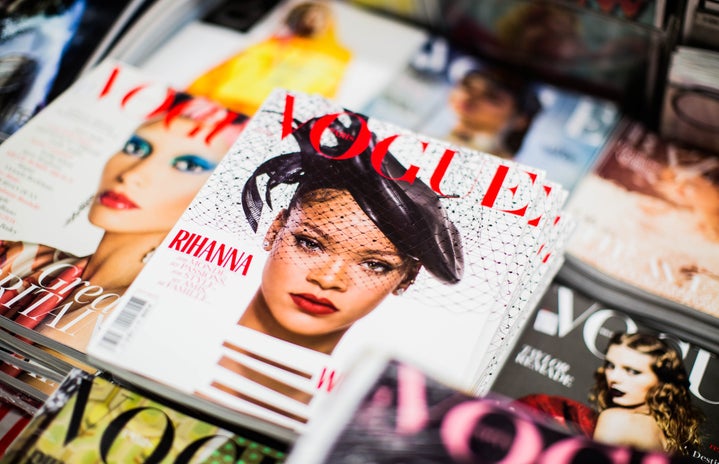Respectfully, in the kindest way possible, some of you never learned how to take inspiration from something.
Coveting media has overtaken our ability to gain inspiration. The shift from print magazines to digital platforms has transformed the way we engage with fashion, transitioning from the nostalgic days of flipping through magazines on your childhood bedroom floor to scrolling through TikTok at our desks. In the age of print magazines being a popular commodity, think TigerBeat and Teen Vogue, many of the clothing and fashion items advertised were at price points unattainable to thirteen-year-old’s like myself whose piggy banks were filled with babysitting and birthday money. I remember being disappointed that I could not afford these outfits amounting to hundreds and even thousands of dollars. With $60 to my name, how was I supposed to afford a $300 pair of jeans?
Magazines were, to me, a wellspring of inspiration, especially as a lifelong daydreamer, aspiring fashion designer, and Libra rising. After conversing with my mom, a fashion and magazine lover herself, I came to understand that the point of the magazine is not to act as a shopping catalogue. She helped me realize that the magazine’s purpose was to inspire personal style rather than dictate purchases.
Today, we can still find these outlets. Let’s think about Pinterest, one of my main sources for shopping because I find the images inspiring. If I choose, some images provide an option to “shop” and provide an affiliated link to directly buy from. I love to use Pinterest as a source of inspiration to shop my own closet. As I become more conscious of the ethical implications of the fashion industry, Pinterest aids my journey toward sustainable shopping. It provides me with inspiration to curate outfits from items already in my closet, and, if I believe that there is a piece truly missing from my closet, I can use these images to inspire my purchase from a sustainable source, such as ethical clothing brands or vintage consignment stores. I believe that Pinterest is a great source for transitioning from fashion magazines to digital sources.
However, not all digital platforms share this ethos. TikTok, in particular, has become a hub for diverse fashion aesthetics, from mob wife to ballet core. One intriguing trend, the “eclectic grandpa,” delves into styles reminiscent of Ralph Lauren and Tom Ford. I find it really interesting to explore the aesthetic of the “eclectic grandpa” because he is so much more than loafers and worn-in wool sweaters. The first search on google defines eclectic as “deriving ideas, style, or taste from a broad and diverse range of sources.” Thus, to be eclectic is not an overnight phenomenon. These sources, especially those derived by a grandfather, were not found from a quick social media search. They came from personal experience, years of work, travel, routine, relationships, and an overall lived life. We fetishize this style because it is a romanticization of a very specific lifestyle. Yes, you may really love some of the pieces being styled in these trends, and I understand, because I do too. I may love these styles, but more so I love the idea of the aesthetic that the eclectic grandpa represents. I may feel good putting on a pair of baggy jeans and a Ralph Lauren pullover, but this outfit does not transport me to the patio of a multi-million-dollar chalet drinking coffee by the outdoor fireplace. However, TikToks titled “How to Dress Like an Eclectic Grandpa” say otherwise, telling you exactly what to buy and where to buy it from in order to embody this fantasy. Unlike an inspiration guide, TikTok as a platform pushes its audiences towards consumerism. It is unconcerned with generating creativity, and instead has a sole focus on influencings its viewers to engage with rigorous western capitalism. I encourage you to question the intentions behind these creators and aesthetics in general.
I believe that it is important to mention that it is not a virtue to have personal style. Trend hopping and trying out new styles is not a “moral failing.” I find myself drawing inspiration from trends constantly. My intention is to encourage you to question trends: where do they come from and why do they exist? If you want to try out a trend, do it! I hope that if you do, you take ethical approaches to your shopping. If we constantly kept up with every trend, we’d be throwing away and rebuying a new wardrobe every week. I like to incorporate trends through trying out new accessories or even window shopping! Fashion and personal style are subjective and unique to each and every one of us. If there is one sentence that you take away from this article, I hope that it’s this: be creative, shop ethically, and look for inspiration in even the most mundane of things.

